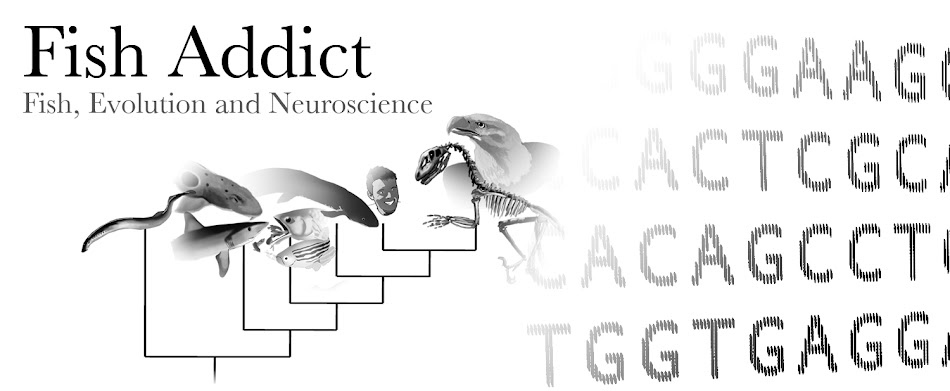The other day a college of mine at the blog Ego sum Daniel made a nice picture and wrote a post on his blog about the totally awesome fish Coelocanth (Latimeria chalumnae). He also showes a estimated timetree of the divergence times between the different bony fish lineages based on an nice site and book called TimeTree. If one excludes the ray finned fish (Actinopterygii) and only look at the so called lobe finned fish (Sarcopterygii) we see the Coelocanths, tetrapods and lungfishes. If one excludes the 21000 tetrapod species the Sarcopterygii clade in the tree of life have only eight extant species. The Coelocanth genus (Latimeria) includes two of these species. Lungfishes (Dipnoi) are divided into two orders, Ceratodontiformes and Lepidosireniformes, that are further subdivided into three genuses. Ceratodontiformes with one extant genus Neoceratodus includes one extant species the australian lungfish. Lepidosireniformes on the other hand includes two genuses Lepidosirenidae and Protopteridae, south american lungfish and african lungfishes respectively. While the south american lungfish is the single species in its genus the african lungfishes consists of four species with a few subspecies.
Clearly the tetrapod lineage of this clade made great success after populating land, but what have happened to the lungfishes since then, what is the evolutionary history of todays six species? Several fossils have been found and it seems that the lungfishes once was a quite large group of fish. Todays lungfishes are a monophyletic group where the Ceradontiformes lineage separated from Lepidosireniformes around 277 million years ago (figure 1).
 |
| Figure 1. Rough phylogenetic tree over the divergence times between the three extant genuses of lungfish. |
The South American and the African lungfishes diverged somewhere around 120 million years ago. Since a major force in speciation is separation of two populations by a barrier one suddenly realize that theres actually a barrier between the South American and African lungfish populations, the little puddle the Atlantic ocean! Geological studies have suggested that the Gondwana continent split between whats now South America and Africa about 120 million years ago. Isn't it beautiful? Molecular and geological data seem together to explain in part when they formed and why we today have the South American and African populations of lungfishes.
When the separation had occurred the African population diverged further finally resulting into what we see today with four extant species. Tokita et al. set out to sort out the evolutionary history of the African lungfishes which in previous studies had been suggested to be paraphyletic. What they did was to look at a part of the mitochondrial 16S rRNA gene and to use that to calculate the divergence of these four species by molecular clock. Their phylogeny of the four species roughly look like what i have drawn in figure 2.
 |
Figure 2. Rough phylogeny of the four extant African lungfish species with the respective divergence times.
|
Tokita M, Okamoto T, & Hikida T (2005). Evolutionary history of African lungfish: a hypothesis from molecular phylogeny. Molecular phylogenetics and evolution, 35 (1), 281-6 PMID: 15737597

I need ur help to do a project on them
ReplyDelete